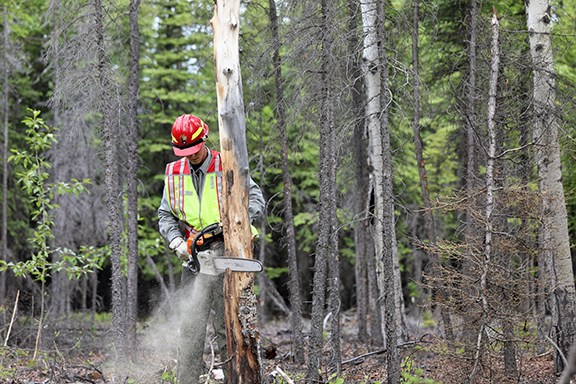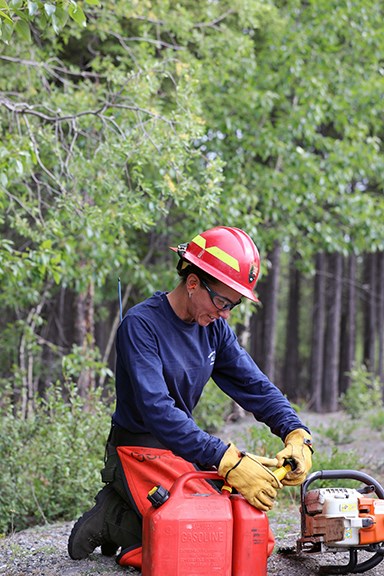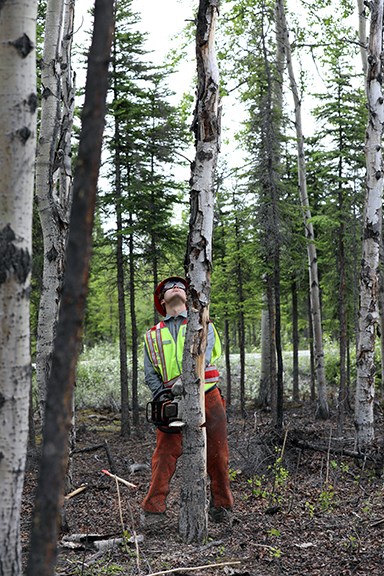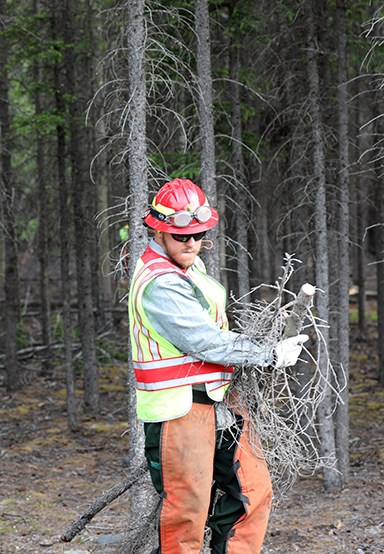Last updated: October 26, 2021
Article
Seasonal Wildland Fire and Fuels Project Work Begins in Alaska for 2019
By Deborah Coble

NPS/D. Coble
The goal was to create a shaded fuel break around the park’s visitor center and headquarters area in Copper Center, Alaska. A shaded fuel break is a standard fire management strategy to lessen the fuels in an area where natural wildfires normally occur. Over time, fire suppression can lead to a dangerous buildup of combustible vegetation near buildings and other infrastructure. A shaded fuel break can prevent this buildup.
The fire crew removed dead and downed trees from a previous windstorm. Standing dead trees create hazards. They are very dry, catch fire easily, and create unnecessary safety risks for both the public and firefighters. All live hardwood trees were left in place. Hardwoods usually don’t carry fire like the more volatile conifer trees can.

NPS/D. Coble

NPS/D. Coble
The crew was quiet and meticulous in their work, vigilant in looking out for potential hazards. “The snags are pretty thick in here,” said Glinski. “Every time we round a corner there’s more.”

NPS/D. Coble
As the crew headed back into the tree line after lunch, news of a lightning-caused fire in Lake Clark National Park and Preserve brought a slight upturn to the corners of their mouths…fire season in Alaska was well underway.
